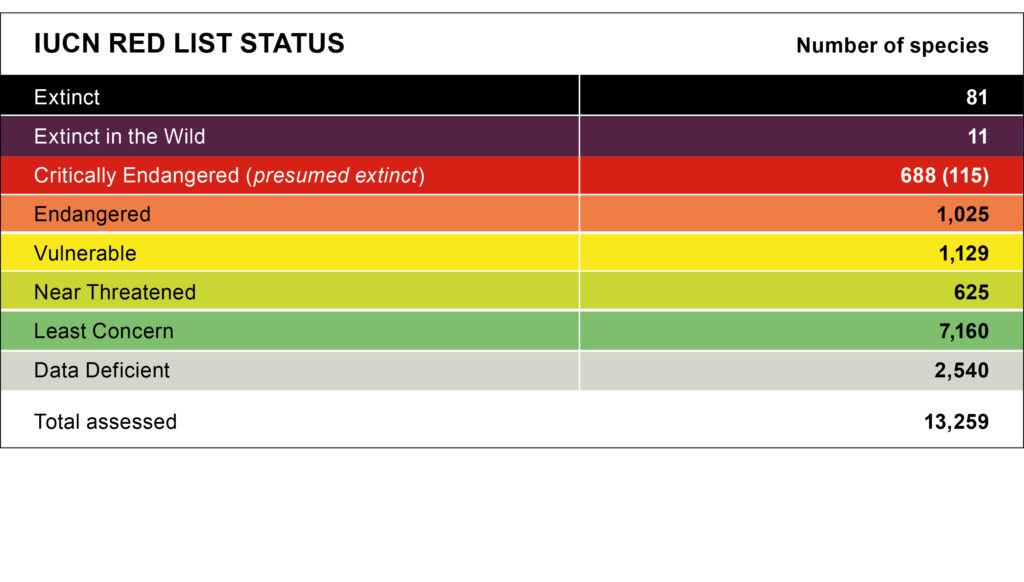There are currently 18,898 recognised freshwater fishes. This is 51% of all the world’s known fish species, and one quarter of all known vertebrates on earth. A remarkable fact given that only 1% of earths surface area is comprised of freshwater, making freshwater ecosystems hotspots of biodiversity.

Freshwater fishes are extremely diverse. They include some of the smallest vertebrates on earth, such as the minnow, Paedocypris progenetica, that lives in peat swamps in Indonesia and is just 8mm long and weighs in at 0.004g, and giant fish such as the Mekong giant catfish, Pangasianodon gigas, Mekong giant freshwater stingray, Himantura chaophraya, and beluga sturgeon, Huso huso, all of which can reach more than 3m in length and weigh more than more than 300kg.

While diverse at the species level, freshwater fishes are less diverse at higher taxonomic levels that marine fishes. Almost 90% of freshwater fish species are found in just eight orders: carps, minnows and loaches (Cypriniformes), catfishes (Siluriformes),characins and tetras (Characiformes), cichlids (Cichliformes), toothcarps and killifishes (Cyprinodontiformes), gobies (Gobiiformes), perch-like fishes (Perciformes), and bettas and gouramis (Anabantiformes).

In addition to being hotspots for biodiversity, freshwater ecosystems around the world are hotspots for biodiversity imperilment, with populations of freshwater species having declined at twice the rate of biodiversity in marine and terrestrial realms (LPI, 2022). Around one third of freshwater fish species are threatened with extinction, and 80 species have already been declared Extinct. Populations of migratory fishes have declined by 76 per cent since 1970, and populations of large iconic fish like the beluga sturgeon and the Mekong giant catfish, have declined by 94% since 1970.

Freshwater ecosystems face a number of threats around the world. This includes habitat loss, pollution from agricultural, urban and industrial sources, over-abstraction of water, over-exploitation of resources and illegal trade in species, the introduction of invasive non-native species, and the loss of free-flowing rivers due to hydropower and infrastructure development.
For more information about the diversity of freshwater fishes and the threats facing freshwater fishes and what can be done to help, please see World’s Forgotten Fishes.
